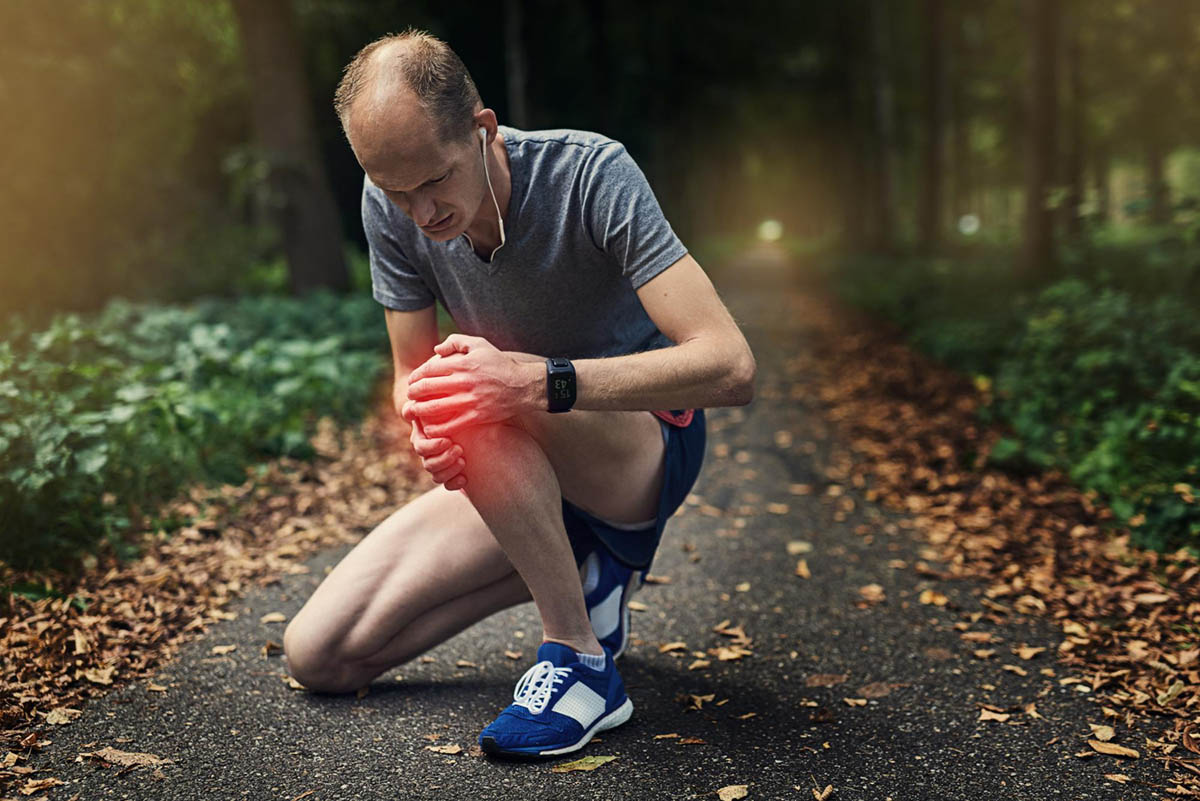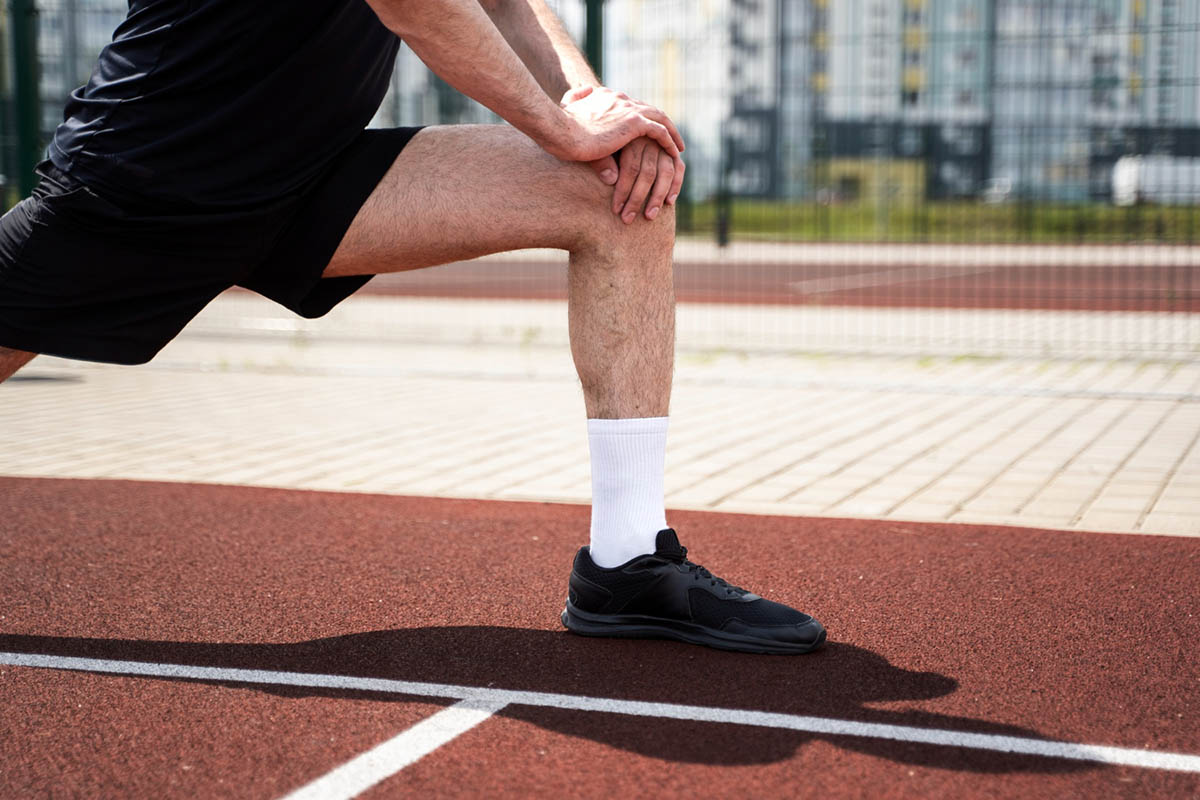Running is a popular form of exercise enjoyed by millions worldwide, but knee pain can be a common and frustrating issue for many runners. Understanding how to prevent knee pain when running is crucial for maintaining overall running performance and enjoyment. In this blog, we will explore various strategies to help you avoid knee pain and keep your knees healthy.
Understanding Knee Pain While Running
Knee pain is a common issue for runners, often resulting from various factors such as overuse, improper form, or underlying health conditions. Understanding the types and causes of knee pain is essential to developing effective prevention and treatment strategies.
Common Types of Knee Pain in Runners
Knee pain in runners often falls into a few common categories:
- Runner’s Knee (Patellofemoral Pain Syndrome): Pain around the kneecap, often due to overuse or poor hip and foot control which exposes the patella to contact with a portion of the femur outside of its groove. Patellofemoral pain syndrome accounts for 20 to 40 percent of all knee issues and is the most frequent running injury seen in sports medicine clinics.
- IT Band Syndrome (Iliotibial Band Syndrome): Pain on the outside of the knee, caused by poor hip and foot control leading the femur to rotate internally and pulls the IT Band across the bony aspect of the lateral knee joint. The IT Band is often blamed for this outside knee pain when it is actually painful because it is being bow-stringed across the bony surface and the friction results in pain. This is a frequent issue for runners and can lead to sharp pain that disrupts your training plans.
- Tendinopathy: Mechanical stress and tissue breakdown of the tendons around the knee, typically from repetitive stress. Tendinopathy can lead to a sore knee, making it difficult to maintain a regular running schedule.
Factors Contributing to Knee Pain When Running
Several factors can contribute to knee pain while running, including:
- Improper Footwear: Wearing a pair of running shoes that don’t provide adequate support can strain the knee joint. Ensure your shoes match your foot shape and type. Those with flat feet need shoes with good arch support, and people with high arches need shoes that are more cushioned.
- Poor Running Form: Incorrect posture and technique can put unnecessary stress on your knees. Proper running form to prevent knee pain includes maintaining a straight posture, controlling the femur using the lateral glutes and abdominals, and avoiding overstriding.
- Muscle Weakness: Weak or tight muscles around the hip/ankle and foot, such as the gluteus medius and gluteus maximus, can contribute to knee pain. Strengthening these muscles is key to injury prevention.
- Overtraining: Increasing intensity or mileage too quickly without proper recovery can lead to overuse injuries and sore knees. Follow a structured running program and tips on how to avoid knee pain when running.
Choosing the Right Footwear

Wearing appropriate footwear is crucial for preventing knee pain and ensuring a comfortable running experience. Selecting the right shoes can provide the necessary support and cushioning to reduce the impact on your knees.
Importance of Proper Shoes
Wearing the right running shoes is essential for preventing knee pain. Proper footwear provides the necessary support and cushioning to absorb the impact of running, protecting your knee joint from excessive stress.
Tips for Choosing the Right Shoe
- Get a Professional Fitting: Visit a specialty running store for a gait analysis and shoe fitting to find the best shoes for your foot type and running style.
- Consider Your Arch Type: Choose shoes that match your foot arch (flat, neutral, or high) to provide optimal support and prevent knee pain from running.
- Replace Worn-Out Shoes: Running shoes typically need replacing every 300-500 miles. Old shoes lose their cushioning and support, increasing the risk of knee injuries.
Proper Warm-up and Cool-down
Warming up before a run and cooling down afterward are critical steps to prevent knee pain. A proper warm-up increases blood flow to the muscles, preparing them for the workout, while a cool-down helps reduce muscle stiffness and soreness. Dynamic warm-up tissue elongation (leg swings, gentle hops, arm pumps, etc.) can effectively loosen muscles before a more extended workout session. Incorporate dynamic simulated running movements and lower extremity pendulum swings before running and avoiding static stretches will improve flexibility, running performance and range of motion.
Strengthening and Flexibility Exercises
Incorporating appropriate strengthening, running sequencing, and pliability exercises into your routine can significantly reduce the risk of knee pain. These exercises help build strong muscles around the hip and coordinate running efficiency, providing better support and enhancing overall joint health, while protecting the knee.
Strengthen Leg Muscles and Core
Strengthening exercises for the legs and core can help support the knees. Focus on exercises for runners that target the hip musculature, lower legs, and ankles/feet – all to protect the hips, knees, and ankles/feet. Strong muscles in these areas can alleviate stress on the knee joint and improve your running form and efficiency. Research from multiple universities indicates that strength training correlates with improved knee health.
Stretching (to do, or not to do)
Research is conflicted about this particular mode of exercise. While some research touts the benefits of stretching, much of the research indicates that a good warm-up is better than stretching. The rationale is that aggressive stretching may stress connective tissue to an excessive degree, causing the body to respond by laying down more connective tissue, creating thicker and more dense tissue to force more stretching – Catch-22.
Also, other tissues, including neural tissues are also stretched at the same time and may become irritated, creating tighter muscles instead and less mobility/pliability. Stretching can also inhibit, or diminish, the muscles’ chance to contract to its maximum when it is called upon. Sustaining the length of tissues is important for all of the muscles of the lower extremities, but can be achieved by warming them with gentle movement – before and after exercising. Efforts should target muscles of the torso, the hips, the thighs, and the lower legs and ankles/feet. This helps maintain a healthy range of motion for all of the chain of muscles and joints, and thus helps prevent common knee injuries.
Proper Running Form
Maintaining proper running form can significantly reduce the risk of knee pain. Focus on keeping your body aligned, landing softly on your feet, and avoiding overstriding. A physical therapist can help assess your running technique and provide tips to improve your form.
Cross Training
Incorporating cross-training activities such as swimming, cycling, walking, resistance training, or yoga can help reduce the repetitive strain on your knees while improving overall fitness. These forms of cardio and strength training can enhance your running performance and reduce the risk of knee injuries.
Staying Hydrated
Proper hydration is essential for joint health. Drink plenty of water before, during, and after your runs to keep your joints lubricated and reduce the risk of injury. Waiting until thirsty while exercising is too late. For every pound of weight lost during activity via sweating, respiration, or urination, without replenishment, has the potential to reduce the athletic performance by nine percent (so losing five pounds during an exercise bout can reduce the performance output by almost fifty percent. Staying hydrated also helps maintain connective tissue health, organ function, metabolism, and supporting your overall physical activity.
Gradual Training and Recovery
Gradual training progression and proper recovery are vital components of a successful running program. By slowly increasing your mileage and intensity while incorporating adequate recovery strategies, you can prevent knee injuries and improve your running performance.
Importance of Gradual Progression
Gradually increasing your running mileage and intensity allows your body to adapt and reduces the risk of overuse injuries. The demands placed on the knees during a progressive running program increases exponentially, not linearly, so care must be taken for recovery prior to the next bout as the miles/demands increase. Following a well-structured running program with gradual progression can prevent knee pain and enhance performance.
Recovery Strategies
Proper recovery is crucial for preventing knee pain and promoting overall health. Here are some effective recovery strategies:
Hydration/nutrition
Make sure that you rehydrate sufficiently enough to help initiate and promote recovery. One of the indicators of sufficient hydration is urine that is a light-straw colored appearance. If you are exercising longer than 45-60 minutes, it is also imperative that you begin to supplement with some easily digestible food sources. This not only helps performance for that day, but also starts the recovery process for the next intended bout of exercise.
Volume
If you are having some difficulty with the knees, it is good to reassess the rate of progression and the total volume of running distances and pace. Modifying both of these variables will allow continued running, uninterrupted, and allow the body a chance to catch up with the overall tissue recovery. The nervous system, the governor of all of the body’s functions, is slower to recover between sessions, especially as the higher mileage is achieved, and repeated.
Rest
Ensure you’re giving your body enough time to recover between runs (see previous section). Rest days are crucial for muscle repair and overall performance. Rest may also include low-level activity of a different form – for example, floating in the pool with easy kicking, or easily spinning on a short bike ride (less than 45 minutes devoted for any other activity).
Listening To Your Body

Pay attention to your body’s signals. If you experience persistent knee pain, it’s essential to consult a healthcare professional. A physical exam by a physical therapist, preferably one who has experience working with runners regarding form and footwear, or in more serious cases, an orthopedic surgeon. The Fellowship-trained Orthopedic Manual Physical Therapist can diagnose the movements and tissues responsible for the knee pain, as a first-choice for appropriate treatment options. This may include Manual Therapy, an MD may prescribe anti-inflammatory medication, but it is not advisable to receive a corticosteroid injection as a first course of action. The pain may be related to movements from other joints – correcting the root cause will result in a positive spiral reducing or eliminating the pain altogether.
Conclusion
Preventing knee pain while running is achievable with the right strategies. By choosing proper footwear, warming up and cooling down, strengthening and gently elongating tissues, maintaining good running form, and incorporating cross-training and gradual progression, you can enjoy pain-free running and improve your performance.
At Austin Manual Therapy, we specialize in treating knee pain to help runners achieve pain-free performance. Our expert team offers comprehensive running assessments to identify and address the root causes of discomfort, ensuring you maintain proper form and prevent injuries. With personalized treatment plans, we aim to enhance your mobility, strength, and overall running efficiency, so you can enjoy your runs without the worry of knee pain.
FAQs
How do I stop my knees from hurting when running?
To prevent knee pain, ensure you’re wearing the right shoes, warming up properly, strengthening your leg muscles, and maintaining good running form. Consulting a physical therapist can also provide personalized advice and knee exercises.
Is it okay to keep running with knee pain?
It’s OK to keep running, but adjusting the volume and pace may be necessary to prevent continuing recurrent aberrant stresses to the knee. The condition may worsen if no change is made to better manage the running form for better efficiency. Consult a healthcare professional for proper diagnosis and treatment, which should include physical therapy or possibly nonsteroidal anti-inflammatory drugs.
How can I run longer without knee pain?
Gradually increase your running distance, maintain proper form, incorporate cross-training, and ensure you have strong and flexible muscles for the entire lower extremity. Maintaining a healthy body mass and following a balanced workout routine can also help prevent knee pain.





